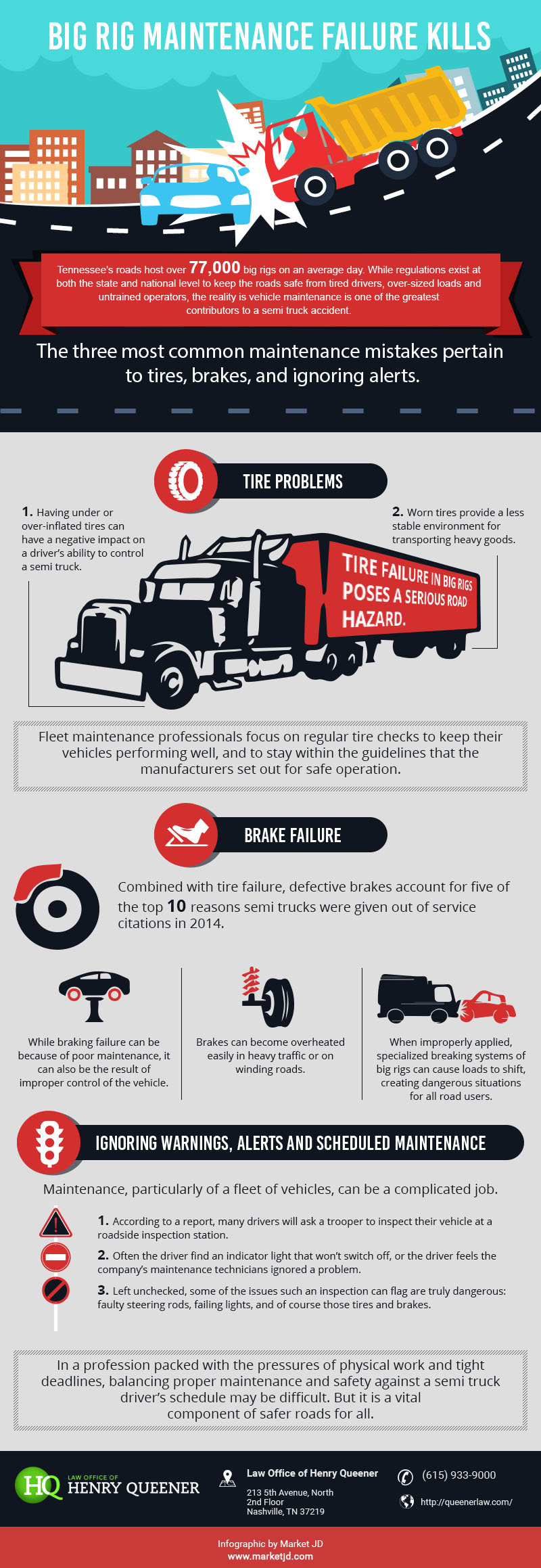Tennessee’s roads host over 77,000 big rigs on an average day. While regulations exist at both the state and national level to keep the roads safe from tired drivers, over-sized loads and untrained operators, the reality is vehicle maintenance is one of the greatest contributors to a semi truck accident. Attorneys and law enforcement officials alike are increasingly aware of the vital role good maintenance plays in big rig safety on Tennessee’s roads. The three most common maintenance mistakes pertain to tires, brakes and ignoring alerts.
Tire problems
Tire failure in big rigs poses a serious road hazard. Having under or over-inflated tires can have a negative impact on a driver’s ability to control a semi truck. What’s more, worn tires provide a less stable environment for transporting heavy goods. Fleet maintenanceprofessionals focus on regular tire checks to keep their vehicles performing well, and to stay within the guidelines that the manufacturers set out for safe operation.
Brake failure
Combined with tire failure, defective brakes account for five of the top 10 reasons semi trucks were given out of service citations in 2014. Determining the root cause of braking failure can occupy a lot of space on a semi truck accident attorney’s desk. While braking failure can be because of poor maintenance, it can also be the result of improper control of the vehicle. Brakes can become overheated easily in heavy traffic or on winding roads. Also, when improperly applied, specialized breaking systems of big rigs can cause loads to shift, creating dangerous situations for all road users.
Ignoring warnings, alerts and scheduled maintenance
Maintenance, particularly of a fleet of vehicles, can be a complicated job. According to a report in the Chattanooga Times Free Press last December, many drivers will ask a trooper to inspect their vehicle at a roadside inspection station, because there’s a niggling indicator light that won’t switch off or the driver feels the company’s maintenance technicians ignored a problem. Left unchecked, some of the issues such an inspection can flag are truly dangerous: faulty steering rods, failing lights, and of course those tires and brakes.
In a profession packed with the pressures of physical work and tight deadlines, balancing proper maintenance and safety against a semi truck driver’s schedule may be difficult. But it is a vital component of safer roads for all.

